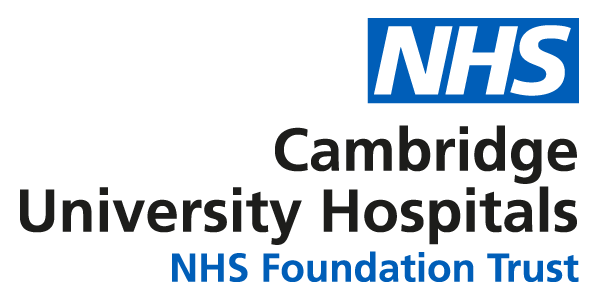We are here to support you with breastfeeding. The Rosie is committed to helping you and your baby get off to a good start. Breastfeeding can be a rewarding and satisfying experience. Sometimes you may need extra help, both in hospital and when you go home.
Rosie infant feeding team
We offer local support to help you breastfeed.
Support line: 01223 596292
This is a voicemail service. We will call you back.
Email breastfeeding support for non-urgent questions, email the Rosie infant feeding team.
Available Monday to Friday, 9am to 5pm.
National helplines
- National Breastfeeding Helpline
Call 0300 100 0212
Every day, 9.30am to 9.30pm - Breastfeeding Network support in Bengali and Sylheti
Call 0300 456 2421 - National Childbirth Trust (NCT)
Call 0300 330 0700
Every day, 8am to midnight - Association of Breastfeeding Mothers
Call 0300 330 5453 - La Leche League
Call 0345 120 2918
Local breastfeeding groups
Some groups offer face-to-face support and others meet online. Please book a place unless it is a drop-in session.
More breastfeeding support
La Leche League Cambridge
Offers in-person and online meetings.
See their Cambridge Facebook page (opens in a new tab) or East Cambridgeshire Facebook (opens in a new tab) for times and details.
Healthy Child Programme Infant Feeding Team
Call 0300 029 5050 or visit the NHS Cambridge and Peterborough Infant Feeding Facebook page. (opens in a new tab)
Why breastfeeding or chestfeeding is good for you and your baby
Breastfeeding and chestfeeding have many benefits for both you and your baby. It’s also good for the environment. It creates no waste and has a very small carbon footprint.
How long should I breastfeed or chestfeed for?
The World Health Organisation (WHO) recommends breastfeeding or chestfeeding your baby for the first two years.
But any amount of breastfeeding or chestfeeding you can do is good for you and your baby. For example, just one teaspoon of colostrum has about a million antibodies to help protect your baby.
The benefits last as long as you keep giving breastmilk.
For advice on starting your baby on solid foods from around six months, visit the Cambridgeshire and Peterborough Children’s Health website: Weaning and introducing solid foods (opens in a new tab)
What is responsive feeding?
Responsive feeding means watching your baby’s signals. Your baby will tell you when they are hungry or need comfort.
You do not need to feed your baby on a strict schedule or watch the clock, unless your healthcare professional tells you to.
Responding to your and your baby’s needs helps:
- Make sure your baby gets enough milk
- Prevent your breasts from getting too full or blocked
- Build a strong bond between you and your baby
- Support healthy brain growth for your baby
Remember, you cannot spoil a newborn by feeding or comforting them when they need it.
Feeding cues
Feeding cues are signs your baby gives when they are hungry. As your baby gets hungrier, these signs get stronger and louder.
Crying is often the last sign your baby will show. If your baby is crying, it might be harder to latch and feed them well. It is easier to feed your baby when they are calm and showing early signs of hunger.
If your baby is crying, try skin-to-skin contact to calm them before feeding.
Keeping your baby close helps you learn their feeding cues and how quickly they move through them. This means you can respond to their needs faster.
How to settle your baby
If your baby shows late feeding cues, you may need to settle them before feeding.
You can settle your baby by:
- Holding them close
- Singing or talking softly to them
- Skin-to-skin contact
- Gentle stroking
Signs your baby is getting enough milk
Many parents ask, “How do I know my baby is getting enough milk?”
Your baby’s stomach is small, so they need to feed often. Breastmilk or chestmilk is made just for your baby and gives them what they need. You cannot overfeed a breastfed or chestfed baby. Always offer your breast or chest when your baby shows feeding cues.
Troubleshooting breastfeeding and chestfeeding
Skin-to-skin
Skin-to-skin contact means placing your baby, after birth, directly on your bare chest. Both of you are covered with a warm blanket. This usually lasts for at least an hour, until after the first feed, or for as long as you want.
You can also use skin-to-skin contact anytime your baby needs calming or comforting. It can help increase your milk supply.
In neonatal units, skin-to-skin contact is called kangaroo care. It helps parents bond with their baby and supports better physical and developmental outcomes.
Expressing breastmilk
Expressing means taking milk out of your breast or chest by hand or with a pump.
There are many reasons to express milk, such as:
- Your breasts or chest feel full, painful, or engorged (opens in a new tab)
- Your partner or family wants to help feed your baby
- You want to increase your milk supply (opens in a new tab)
- You will be away from your baby
If your baby is having trouble latching or sucking well, you can read about positioning and latching (opens in a new tab). You can also contact the Infant Feeding Team (IFT) or your community health team for support.
Important safety note about syringes for colostrum
If you use a syringe to collect colostrum and feed your baby, always remove and throw away the lid before feeding.
Check all syringes carefully — some lids are clear and harder to see.
If you have questions, email the Infant Feeding Team or speak to your midwife.
Cleaning and sterilising feeding equipment
You should always clean your feeding equipment with warm soapy water before sterilising it. This helps remove all milk and dirt, making it safe for your baby to drink from.
Breast / chest concerns
Nipple concerns
Unicef UK Baby Friendly Initiative | Hand expression video
Link: https://www.youtube.com/watch?v=K0zVCwdJZw0

